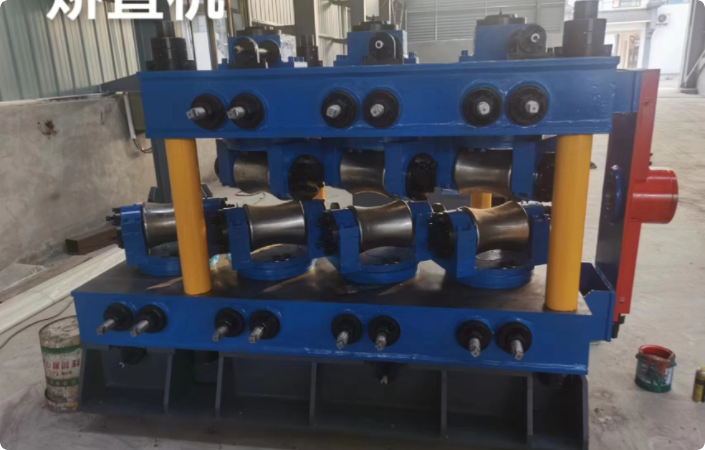making hydraulic pipe bending machine
Making a Hydraulic Pipe Bending Machine A Comprehensive Guide
In the realm of manufacturing and metalworking, the need for precision and efficiency is paramount. One tool that stands out in achieving both of these goals is the hydraulic pipe bending machine. This machinery is essential for producing bent pipes used in numerous applications, from construction to automotive. In this article, we will explore the components, workings, and process of making a hydraulic pipe bending machine, emphasizing the importance of each aspect.
Understanding the Basics
A hydraulic pipe bending machine uses hydraulic power to bend pipes and tubes into desired shapes and angles without compromising the integrity of the material. The main components of this machine include a hydraulic power source, a bending arm, a die (or mold), a clamp, and a control system. Understanding these elements is crucial for anyone looking to build or operate a hydraulic pipe bending machine.
Components of a Hydraulic Pipe Bending Machine
1. Hydraulic Power Source This is the heart of the machine. It generates high pressure that allows the bending process to occur smoothly. The power source can be electric or manually operated, depending on the design and application of the machine.
2. Bending Arm The bending arm is responsible for moving the pipe into the bending die. It is crucial that this arm operates smoothly and is able to handle the weight and rigidity of the pipes being bent.
3. Die The die is the mold that shapes the pipe during the bending process. Different dies can create various bend angles and radii. It’s essential to select the appropriate die for the specific pipe size and required bend.
4. Clamp This component holds the pipe securely in place during the bending process. A strong clamp is necessary to ensure that the pipe doesn’t slip, which could lead to inaccuracies and defects.
5. Control System Modern hydraulic pipe bending machines often come with electronic control systems that allow for precise adjustments and programming of the bending process. This aspect is vital for achieving consistent results across multiple pieces.
The Process of Making the Machine
making hydraulic pipe bending machine

Building a hydraulic pipe bending machine requires a combination of mechanical engineering skills, knowledge of hydraulic systems, and an understanding of safety protocols. Here is a step-by-step guide to creating a basic hydraulic pipe bending machine
1. Designing the Blueprint Start with a detailed design that includes all components. Consider factors such as the maximum pipe diameter, bending radius, and the power source required.
2. Sourcing Materials Gather the necessary materials, including metal for the frame, hydraulic cylinders, piping, and electronic components if applicable. Quality materials are essential to ensure durability and functionality.
3. Assembling the Frame Construct the frame of the machine, ensuring it is sturdy enough to withstand the forces applied during bending. The frame must also be stable to prevent any movement during operation.
4. Installing the Hydraulic System Set up the hydraulic power source, cylinders, and connections. It is crucial to ensure there are no leaks in the hydraulic system, as this can lead to failures during operation.
5. Mounting the Bending Arm and Dies Attach the bending arm to the frame and install the various dies. Ensure that the arm has enough range of motion to accommodate different bending angles.
6. Installation of Control Systems If your design includes automation, install the control panel and wiring. Program the controls according to the desired specifications for bending operations.
7. Safety Measures Implement safety features such as emergency stops and protective guards. Operators should be trained in proper usage and safety protocols.
8. Testing the Machine Before putting the machine into full operation, conduct several test runs with scrap material. This helps to identify any issues that may need addressing and ensures that the machine produces accurate bends.
Conclusion
Building a hydraulic pipe bending machine is a rewarding project that combines engineering, craftsmanship, and creativity. By understanding the components and processes involved, anyone from hobbyists to professionals can create machines that contribute to efficient metalworking practices. With careful planning, a commitment to safety, and attention to detail, a hydraulic pipe bending machine can be a valuable asset in various industries. As technology advances, the potential for hydraulic systems will only continue to expand, offering even more opportunities for innovation in the field of metal fabrication.
-
High Frequency Straight Seam Welded Pipe Production Line-BzZhou Xinghua Machinery Equipment Manufacturing Co., LTD.|line pipe steel&welded gas pipeNewsJul.30,2025
-
High Frequency Straight Seam Welded Pipe Production Line-BzZhou Xinghua Machinery Equipment Manufacturing Co., LTD.|High Precision&Automated SolutionsNewsJul.30,2025
-
High Frequency Straight Seam Welded Pipe Production Line - BzZhou Xinghua Machinery Equipment Manufacturing Co., Ltd.NewsJul.30,2025
-
High Frequency Straight Seam Welded Pipe Production Line-BzZhou Xinghua Machinery Equipment Manufacturing Co., LTD.|Precision Welding, High EfficiencyNewsJul.30,2025
-
High Frequency Straight Seam Welded Pipe Production Line|BzZhou Xinghua|Precision Welding&EfficiencyNewsJul.30,2025
-
High Frequency Straight Seam Welded Pipe Production Line - BzZhou Xinghua|Precision Engineering&EfficiencyNewsJul.30,2025


